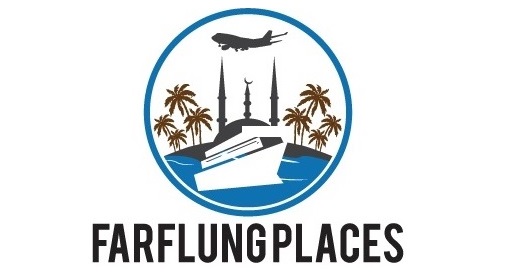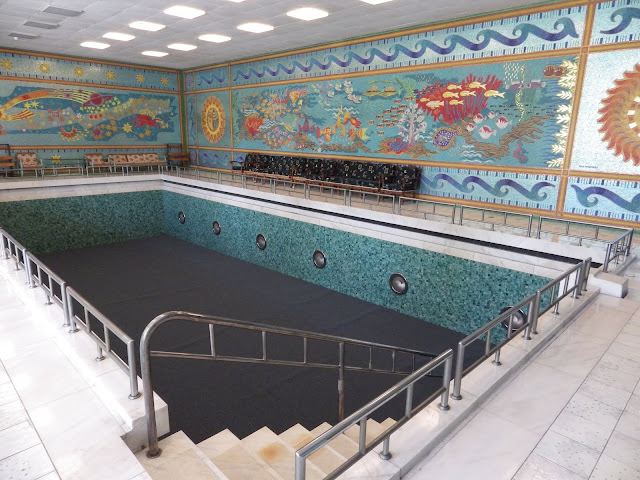The first (and still only) country to ever refuse me a visa was Romania. The country fascinated me, particularly the megalomaniac building projects of its leader Nicolae Ceausescu. But it was not to be, and I was refused entry by his government.
I watched with great interest the collapse of his regime and his rather rushed execution on Christmas Day 1989 as the wave of anti-communist revolutions swept through eastern Europe. It has taken me a while to actually get to the country, but I finally managed it and had absolutely no issues getting into the country, and I didn't even need a visa as the smiling customs official stamped my passport.
Checking into my downtown hotel in Bucharest I was asked by the lady checking me in whether I was doing a 'Dracula tour' and heading to Transylvania. My reply that I was doing a 'Ceausescu tour' left her open mouthed. Unusual, maybe, but as someone fascinated by history, and finally able to visit many of the spots I had seen on television as the world changing events occurred , Dracula was going to have wait.
The Palace of the Parliament
My first stop was the incredibly over-sized Palace of the Parliament. The largest administrative building in the world, covering an area of 365,000 square metres and 84 metres in height, it dominates Bucharest.
By far Ceausescu's most ambitious building project it was driven by his desire to recreate the centre of Pyongyang in North Korea of all places. Monasteries and whole suburbs were razed in this megalomaniac plan. Over 40,000 people lost their homes and most were not offered any compensation, and as many as 3,000 workers died in building it.
Ceausescu was a constant visitor to the building site, and it was almost completed before he was overthrown. After lying idle for several years after the revolution it was finally completed in 1994.
Visits are easily arranged here. The tour is impressive, not least by how much of the building is unused. It is simply too big. On my tour we walked four kilometres on various levels and saw less than 10% of the building. The best way to understand the huge size of Palace is to try and walk around the outside of it.
The Ceausescu Mansion
The extravagant former residence of the Ceausescu family lies to the north of Bucharest. Only opened to the public in 2016 it gives an insight into the luxury lifestyles and rather garish taste of Elena and Nicolae.
Gold bathrooms, tick. Massive chandeliers dominating rooms, tick. Ugly paintings, tick. And so it goes on. Ceausescu was a huge fan of peacocks it turns out. He let them loose in his garden (there are still some offspring of the original residents who still roam there making an appalling racket) and desired paintings and mosaics of them everywhere.
The swimming pool could easily host a game of water polo, while above the nuclear fallout shelter in the basement is both the Ceausescu cinema (it could seat 60 people) and his rather nice bar which he allegedly spent a lot of time drinking in.
The house was visited by locals soon after the revolution as the Securitate, the secret police who protected it, fled for their lives. Luckily only Elena's shoes, fur coats and jewellery were liberated before the new authorities restored law and order.
It was put up for sale, but attracted no bidders, before it was decided to open it to visitors for the second time, although this time officially on tours, and can be visited. Details here. Although the tours are still pretty limited, with limited numbers, do not worry about trying to call and book a tour.
I tried ten times on different days and no one answered the number supplied, or replied to an email, so I just turned up half an hour before the start time and had no problem getting a ticket.
Revolution Square
In the centre of Bucharest, formerly known as Palace Square, this was where it really started to go wrong for Ceausescu. He totally misjudged the mood of his people, many of whom were encouraged by the fall of the Berlin Wall, and popular uprisings in other Eastern European countries, as well as shocked by the protests which turned into a massacre in nearby Timisoara.
The look of confusion on Ceausescu's face as the crowds booed and shouted "Timisoara" is one of the lasting images of the Romanian Revolution. Despite desperately trying to calm the crowds, and get them excited by announcing an increase in the national minimum wage, he had to give up and seek shelter inside the building of the central committee of the communist party of Romania.
This was the start of riots in Bucharest and of open rebellion. Ceausescu was forced to flee from the building from its roof in a helicopter with his wife Elena, with protesters only metres behind them. The army, which had joined the rebellion, took control of the airspace and forced it to land in Targoviste.
Today a small marker points to the building where the final speech took place. It remains a government building and is not open to visit. The actual balcony is much smaller than I imagined from seeing it on TV. Behind it is a larger monument to the rebellion, the Memorial of Rebirth. Sadly it has been badly vandalized and looks very much uncared for.
Targoviste Army Barracks
Where else to end a Ceausescu tour but in Targoviste. Visit the army barracks where Nicolae and Elana were tried and then executed in extremely swift fashion. After their helicopter was forced to land the army brought them here by road.
You can now see the rooms where they had a medical examination to see if they were fit for trial (their lawyer unsuccessfully tried to persuade them to plea insanity, they refused) where they were tried, where they slept, and even the toilets they used which can be also used by visiting tourists, maybe the ultimate experience for Ceausescu junkies.
The most brutal sight is the wall where they were executed after the death sentence was given for their crimes of genocide by the rather undemocratic army appointed judges. Three soldiers fired over 120 bullets into their bodies. The many bullet holes and chunks of plaster that were destroyed during the execution are visible, as are the crime style outlines of the Ceausescu bodies painted on the ground.
To get to the Targoviste Army Barracks is relatively simple. Ninety minutes by train from Bucharest North railway station. The barracks are two minutes walk on the left from Targoviste station. Open 9-5 Tuesday to Sunday, admittance 10 Lei.










0 comments